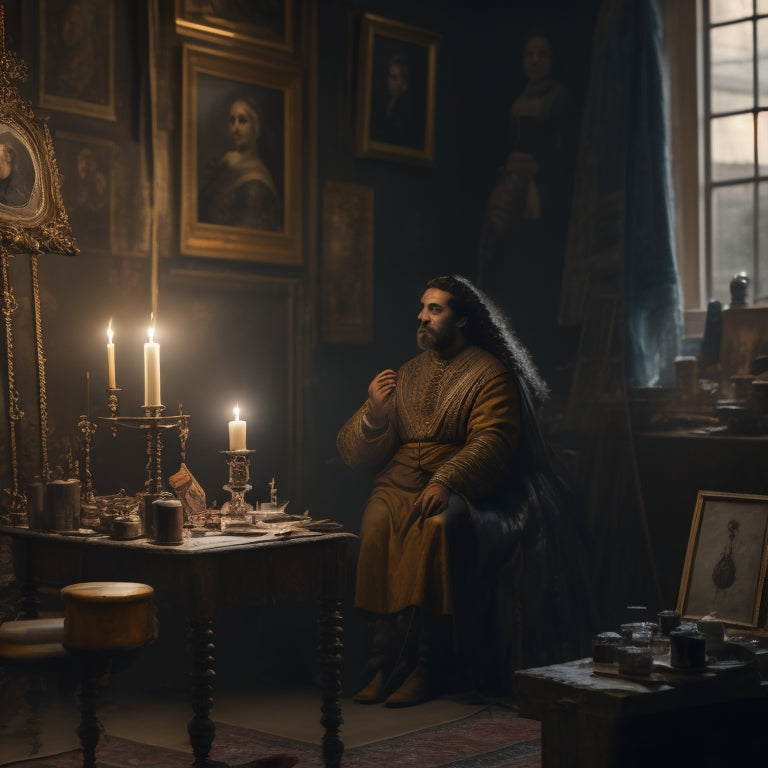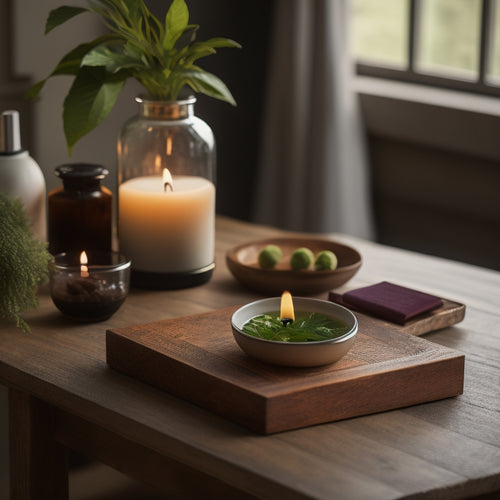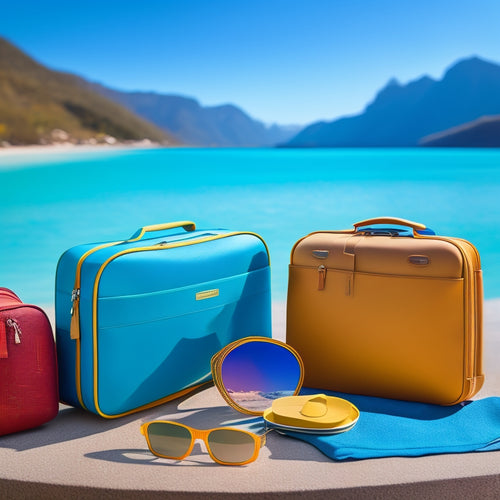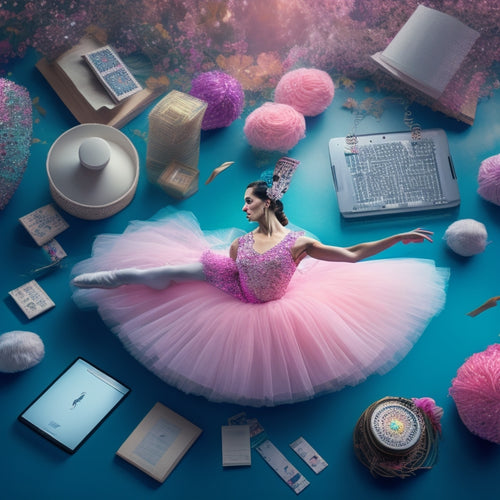
Artistic Mastery Unveiled: Saltz's Guide for Artists
Share
You're about to set off on a transformative journey to open up your artistic potential, one that requires embracing vulnerability, taking calculated risks, and cultivating a deep understanding of the artistic landscape. By revealing hidden aspects of yourself, you'll create authentic and impactful art. Developing a distinctive voice and understanding art's multifaceted purposes will help you navigate the complex artistic landscape. As you explore new ideas and push boundaries, you'll find inspiration and guidance. By accepting your unique voice and staying true to yourself, you'll create art that resonates. Now, get ready to uncover the secrets that will elevate your art to the next level.
Key Takeaways
• Embracing artistic vulnerability allows artists to tap into their unique perspective and create authentic, impactful work that resonates with their audience.
• Developing a distinctive artistic voice requires experimentation, risk-taking, and dedication to honing skills through consistent practice.
• Understanding the complexities of the artistic landscape, including historical context and symbolism, enriches an artist's practice and informs their creative decisions.
• Effective networking, a clear artist statement, and resilience in the face of rejection are essential for navigating the art world successfully and achieving career goals.
• Seeking inspiration from artistic influences, mentorship, and masters' works, while staying open to new experiences, helps artists innovate and find their unique voice.
Foundational Principles for Artists
As you commence on your artistic journey, recognize that making art can be a humbling experience, requiring you to reveal aspects of yourself that may have previously remained hidden.
This vulnerability is essential for genuine creative expression, as it allows you to tap into your unique perspective and experiences. Embracing artistic vulnerability enables you to explore new ideas and push boundaries, leading to more authentic and meaningful art.
Developing Your Artistic Voice
You're now poised to harness the power of vulnerability, having acknowledged its role in authentic creative expression, and it's time to channel this courage into cultivating a distinctive artistic voice that resonates with your unique perspective.
Exploring creativity involves embracing experimentation and taking calculated risks to develop your style. Honing skills through consistent practice and dedication will help you refine your craft.
As you navigate the process, remember that your artistic voice is a reflection of your experiences, emotions, and values. By staying true to yourself, you'll create work that's authentic and impactful.
Don't be afraid to push boundaries and challenge norms – it's in these moments of uncertainty that innovation and growth often emerge.
Understanding the Artistic Landscape
To truly grasp the artistic landscape, recognizing that art serves multiple purposes beyond mere visual appreciation is vital, often conveying complex ideas, emotions, and cultural commentary. As you explore this landscape, you'll uncover the intricate web of meanings and symbolism embedded in artworks.
It's crucial to develop your skills in interpreting symbolism, deciphering the artist's intent, and understanding the historical context in which the piece was created. By doing so, you'll gain a deeper appreciation for the art and its ability to evoke emotions, spark conversations, and challenge societal norms.
Exploring creativity and interpreting symbolism will become second nature, allowing you to navigate the artistic landscape with confidence and insight, ultimately enriching your own artistic practice.
Navigating the Art World Successfully
Getting around the art world successfully requires building relationships with key figures, including dealers, collectors, critics, and curators, who can greatly impact your career trajectory. Effective networking strategies involve attending exhibitions, joining art organizations, and engaging in online forums to connect with these influential individuals.
Crafting a clear and concise artist statement is also vital in communicating your vision and goals to these stakeholders. However, be prepared to handle rejection, as it's an inevitable part of the art world. Building a support group of fellow artists can help you stay resilient and motivated.
Finding Inspiration and Guidance
As you search for inspiration and guidance, embracing your unique artistic voice becomes essential to standing out in a crowded art world.
You must acknowledge and accept the artistic influences that shape your creative process. Seek mentorship from experienced artists who can provide valuable insights and critiques.
Finding inspiration is an ongoing process that requires exploring different sources, from nature to art history. Analyze the works of masters, understanding what resonates with you and how you can apply those principles to your own art.
Don't be afraid to experiment and take risks, as this is where true innovation occurs. By staying open to new experiences and influences, you'll continue to evolve and refine your artistic voice.
Frequently Asked Questions
How Do I Balance Creative Freedom With Commercial Viability?
You navigate the fine line between creative freedom and commercial viability by staying true to your artistic expression while considering market trends, infusing your personal style with audience appeal to craft a unique, marketable product.
Can I Create Art That Is Both Personal and Universally Relatable?
You can craft art that resonates both personally and universally by embracing individuality, injecting relatable emotions, and balancing personal expression with universal appeal, making your unique voice heard while transcending boundaries.
Is It Necessary to Attend Art School to Become a Successful Artist?
Did you know that 66% of famous artists are self-taught? You don't need art school to succeed; focus on developing your skills, and remember that education doesn't equal talent – it's about honing your craft through dedication and persistence.
How Do I Protect My Work From Copyright Infringement and Theft?
You safeguard your art by understanding legal protection options, such as copyright registration and licensing, which serve as deterrents to theft. Prioritize intellectual property precautions, like watermarking and limited sharing, to shield your creative work.
Can I Transition From One Artistic Medium to Another Mid-Career?
You're considering a mid-career shift to a new artistic medium? Embracing challenges, explore new techniques, and don't be afraid to start from scratch – it's a chance to reignite your creative spark and refresh your artistic voice.
Related Posts
-

Must-Have Self Care Products for Mindful Living
To adopt mindful living, consider must-have self-care products like mindfulness journals and essential oils. Journals...
-

Must-Have Packing Cubes for Stress-Free Travel
Packing cubes are must-haves for your stress-free travel. They turn chaotic suitcases into neatly organized compartme...
-

Sfballet: Enhancing Dance Education With E-Papers
SF Ballet is pioneering dance education through innovative e-papers, leveraging digital technology to provide high-qu...


